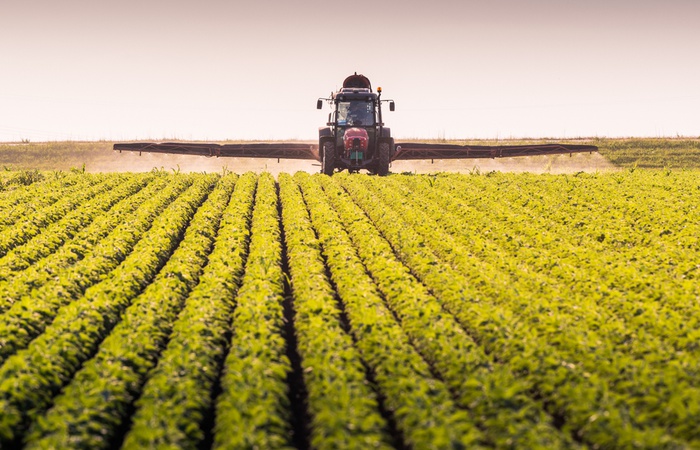Сельское хозяйство — старейшая отрасль в мире, и довольно неочевидная цель для инноваций. Но сейчас она испытывает особенное давление из-за изменения климата и динамики цен. Кроме того, сельское хозяйство создает треть мировых выбросов парниковых газов, из-за чего отрасль является и причиной, и жертвой глобального потепления. Рассказываем о проектах, которые помогают агропрому справиться с новыми вызовами.
Прогнозирование посевов
Оскар Марко — сооснователь и CEO Cropt, компании из Сербии, которая помогает семеноводческим компаниям и банкам прогнозировать будущий урожай. Он разработал алгоритмы машинного обучения, которые пытаются ответить на вопросы вроде: «Стоит ли сеять эти семена на этом поле?» или «Будет ли этот сорт растения лучше реагировать на определенный тип почвы?»
Из-за засухи и повышения температур вегетационный период становится все более нестабильным, и он полагает, что подобные технологии будут пользоваться большим спросом.
Summer droughts have led to the fact that this year the earliest harvest in history was harvested in the wine regions of France. In the UK, livestock were fed winter hay supplies because the grass had dried up and they had nothing to eat. In Switzerland, military helicopters were sent to mountain pastures with water supplies so that the herds would not die of thirst.
“Farmers understand that they need to do something new, and if they don’t change their methods, they will fail,” says Oscar Marko, CEO of Cropt.
His solution is to provide the farmer with the tools so that he can work as a hedge fund manager. According to him, choosing the right seed material is “literally the same as investing in the stock market.”
“Once we model the growth, we can see what will happen in the good and bad years. We can turn a farmer into a Wolf from Wall Street, able to choose between low- and high-yielding crops,” he adds.
Marko says that his technology is able to increase the profit from sowing by a quarter.
Farmers are already having to adapt to climate change. According to Marko, corn is the most profitable crop that can be grown in Southeastern Europe, “but recently it has been considered more risky, so farmers are increasingly planting sunflower, which is more resistant to drought.”
Cost reduction
More and more AgroTech startups are trying to help farmers make the summer period more predictable. Another way to attract buyers is to cut energy and fertilizer bills.
One of these startups, Swiss ecorobotix, sells technical devices that are installed on tractors. Inside the compact machine there is a program that selects the exact spraying methods depending on the crop growing in the field. The company says that this saves about 90% on fertilizers, but ecorobotix technology and software licensing will require costs.
Meanwhile, the French AgroTech startup Javelot produces a set of sensors that allows farmers to monitor granaries and adjust the temperature if it gets too hot, saving money on expensive ventilation systems.
“We help you spend less,” says the company’s motto.
Another Swiss startup, Vivent, has developed a way to detect stress signals in plants before the appearance of visible symptoms. It is claimed that the technology allows a plant to report if it is suffering from an outbreak of a pathogen, needs a certain nutrient or requires more water.
“Plants have about 35 sense organs, they can hear and see, they can distinguish many wavelengths. We wanted to connect to this sensor network and use it to stimulate innovation,” explains Vivent co—founder and CEO Carroll Plummer.
As soon as the plant is connected to Vivent technology, which took 10 years to develop, it will warn the farmer at the first signs of stress. This allows you to take action much earlier.
Vivent is mainly focused on the indoor segment – farmers who grow crops indoors, for example, greenhouse managers in the Netherlands. The company has about 80 clients, each of whom receives a weekly summary of the key indicators of their cultures.
According to Plummer, one of the clients said that the technology helped increase yields by 4%. Sensors can also be useful to reduce energy costs.
Who is willing to invest in technology?
Despite the promises of sensors and data analytics, robotics and unmanned aerial vehicles, it is not easy to revolutionize agriculture.
One of the obvious problems is that agriculture is a high—risk and low-profit business.
“Farmers are one of those people who show the greatest interest in technology, but they are also very difficult to convince to introduce something new,” says Leticia de Panafier, an investor in the venture capital company Astanor Ventures, headquartered in Brussels.
According to Matteo Vanetta, CEO of the Swiss-Italian startup farm Technologies, European firms have a long way to go compared to American ones. The company, which offers tools such as field sensors and software, raised €17 million from investors in August.
“The penetration of digital technologies on European farms is 10%. Excel is still one of our main competitors,” Vanotti estimates.
It’s not about technophobia: farmers have to make so many decisions every day that they want answers to a lot of questions.
And startups that hope to break into the field of agriculture have to go through trial and error for a long time before giving them a useful product.
For example, providing algorithms with the best data is an incredibly large—scale task in the agro-industrial world.
“If you work with self-driving cars, you can take five cameras, attach them to the hood, drive for an hour and collect terabytes of data. To get a row in the spreadsheet for our fields, you need to track the harvest throughout the year,” explains Marco from Cropt. “Thus, it is very difficult to get them — and very expensive.”
A source: https://rb.ru

